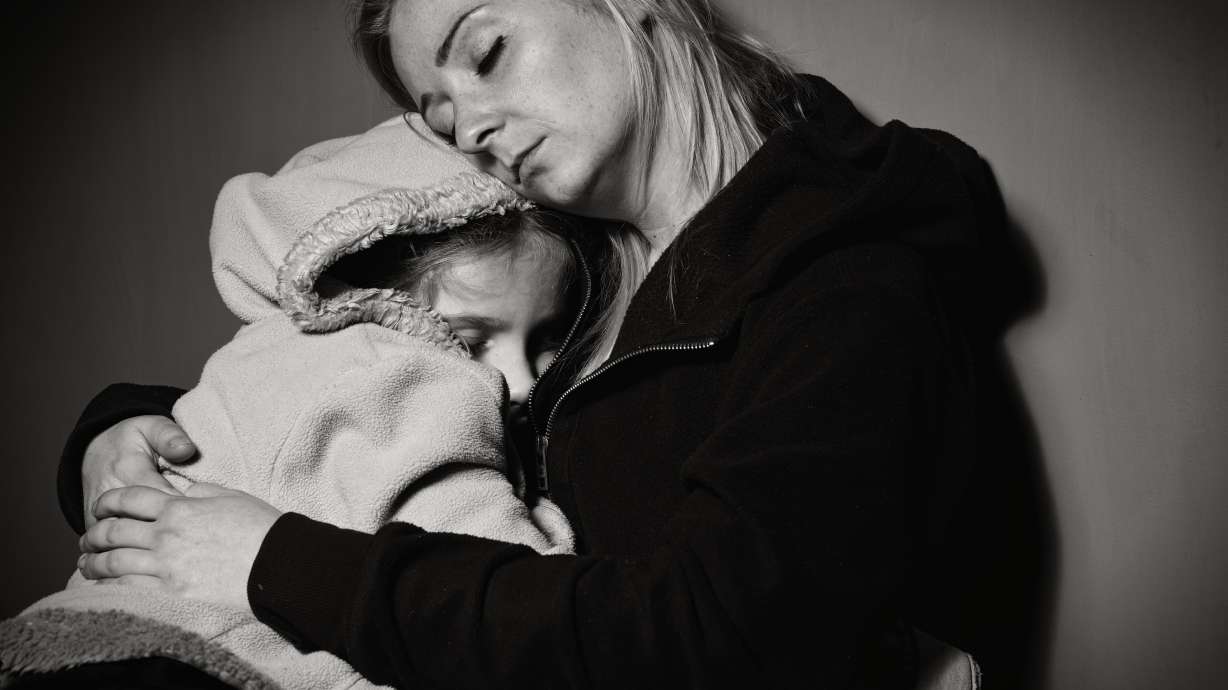Estimated read time: 4-5 minutes
This archived news story is available only for your personal, non-commercial use. Information in the story may be outdated or superseded by additional information. Reading or replaying the story in its archived form does not constitute a republication of the story.
LOGAN — A new study from Utah State University's Utah Women and Leadership Project, in partnership with USU Extension, revealed that poverty numbers for women in Utah have improved since a 2016 study. But the current situation of women facing poverty could have long-term implications on the state, an author of the report said.
The 2016 Utah Women and Leadership Project research report entitled "Poverty Among Utah Women" found that 46.9% of Utah female-headed households with related children under age 5 were living in poverty.
Since the initial report, the overall poverty rate in Utah has decreased by 2.4%. However, over a third (36.4%) of Utahns still live in poverty. Although Utahns experience lower rates of poverty than the national average — 8.9% in Utah vs. 12.3% nationwide — 9.6% of women continue to live in poverty compared to 8.2% of men.
"We have less poverty rates when we compare Utah to women across the country, but there's still thousands and thousands of women who are still living in poverty," said Susan Madsen, founding director of the Utah Women and Leadership Project and one of four authors on the report.
Madsen said that there are many factors that influence the disparity in poverty rates among women in Utah, including being a single mother juggling child care costs, living in rural areas, the gender wage gap and inconsistencies in educational attainment levels between men and women.
"Being a single mom is a big indicator of poverty. If you're a single mother in Utah and you have kids under five, 36% of these women are living in poverty — that's huge," Madsen said.
Another troubling statistic is that 19.2% of Utah women who are heads of households are in poverty, according to the report. This figure jumped out to Madsen, as it impacts the future of Utah.
"The kids are going to struggle more," Madsen said. "If you're a single mom trying to even work jobs, you get jobs, you maybe cover some of the child care, (but) you have less time; you just work."
"Those are long-term impacts on the state of Utah," she said.
Madsen also talked about a phenomenon known as the "cliff effect" that is an additional barrier to women trying to escape poverty. As women living in poverty advance in their employment and receive wage increases, state-sponsored benefits are automatically reduced at a rate faster than the increased compensation can replace, according to the report.
Some positive news did come from the report: overall, Utah women live in poverty at a lower rate than the national average — 9.6% vs. 13.5% — and 2019 U.S. census data ranks Utah's poverty rate as second lowest in the nation. In the 2016 snapshot, Utah was ranked 12th, which shows marked improvement in the last five years.
That isn't to say that women suffering from poverty in Utah is a problem that's just working itself out, or that there still isn't work to be done to address the issue, Madsen said.
"Sometimes we put percentages and we don't think of people," she said. "We're talking thousands and thousands of women and families. We're making progress, but that's thousands of lives — children who are in situations where they're starting out with less opportunities — we're talking about the future."
One organization contributing to the progress, Madsen noted, is the Weber Prosperity Center of Excellence in Weber County.
The center was created in 2019 by the Weber County Commission, Weber-Morgan Health Department and Weber Human Services as a part of an interagency effort to confront intergenerational poverty within the county. Intergenerational poverty is a situation of poverty and public assistance use that carries from one generation to the next.
"They've got an interesting model that may roll out to other counties, as well, and they're really trying to work on issues like this and how you take a situation and try to support (people) in various ways," Madsen said.
She also pointed out the importance of organizations like the Utah Food Bank, Utah Community Action, Community Action Services, YWCA Utah, and PeopleHelping People that provide support for individual and family well-being, including educational resources, employment training and mentoring as well as assistance into permanent housing.
"There (are) some really good resources if we start connecting people," Madsen said.
"State leaders can work together with community organizations to make measurable differences," said Dawn-Marie G. Wood, assistant professor of psychology at Brigham Young University and lead author for the report, in a news release Wednesday. "Collaborative efforts from Utahns working from homes, schools and businesses can also help to address gender disparities in poverty. Ultimately, decreasing poverty rates among Utah women will benefit families, positively impact children's futures, and strengthen the influence of women in the state."
Additional authors on the report are Emily S. Darowski, assistant librarian at Brigham Young University, and Gregory C. Knapp, undergraduate research assistant.









